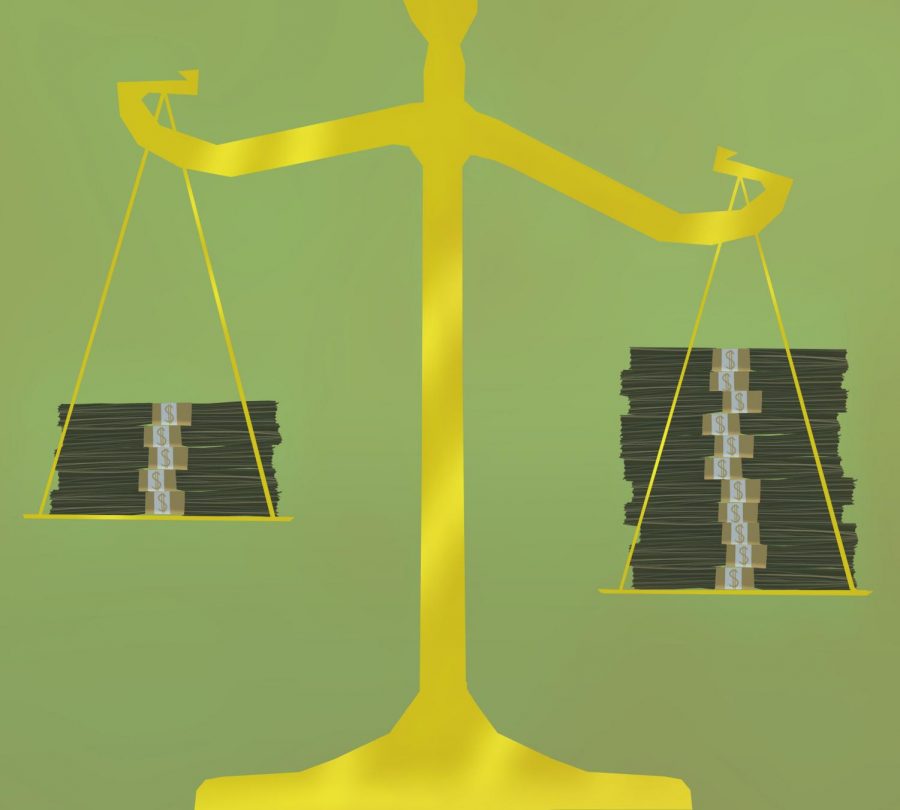The Wage Gap Struggle
THE WAGE GAP Women have been facing gender discrimination for decades. Many people do not realize the severity of the issue, indicating how important spreading awareness about the issue is.
May 31, 2019
The wage gap. Something that has been a struggle for centuries for half of the world’s population. Yet there continues to be debate over whether or not the issue exists at all. Let us take a look into the wage gap’s history and its role in today’s society.
According to History, The Equal Pay Act was passed by President Kennedy in 1963. It is the labor law that prohibits gender discrimination, and was an amendment to the Fair Labor Standards Act. However, this only came about after millions of women began to demand their fair share for the labor they were providing. Women made up a quarter of the American workforce by the early 1900s, and as they were considered to be inferior, employers exploited that stigma and paid women less. That way, male dominance could continue to reign, and employees could save money on workers.
Efforts to fix the immense wage gap increased in World War II. As most of the men went off to war, the women were left to take over factories and businesses in towns. Also, vast amounts of supplies were needed for the war, and women helped to produce them. As a result, in 1945, History says the Women’s Equal Pay Act was attempted to be introduced, but it did not pass. However, the Educational Amendment of 1972 expanded the reach of the Equal Pay Act, allowing people now to be able to sue others under this law if they are being unjustly treated because of gender discrimination.
But no matter how many laws get passed granting women rights, there still seems to be something holding them back. Freshman Gabrielle Irman says, “Based on the past [when] women were not considered equal, it carried on into society and hasn’t been remedied.” After all, according to USA Today, women face many hardships at work such as receiving fewer promotions, experiencing pregnancy discrimination, and dealing with sexual harassment. And even in 2019, women are making an average of 80 cents for every dollar a man makes. So how does one begin to argue that the wage gap does not exist, despite all the evidence proving it?
FGB contributor Jennifer Mayer believes that those who deny the wage gap merely think women that have a smaller salary are having a unique experience; that it is unusual and does not typically occur. Or, they are not doing their job adequately enough, making their paycheck justified. Other individuals claim that men and women start out at a job being equally paid, neglecting to acknowledge the change in pay that occurs as men begin to ascend the pyramid of power at a faster rate than women. Lastly, some people claim women want to balance child care alongside their jobs, so they end up working less hours and therefore deserve lower salaries.
It is difficult to say whether those reasons are truly why there are so many people who believe men and women get paid equally, or if our society is simply continuing to support the patriarchal lifestyles that our ancestors led. Junior Joshua Park says, “[They] probably don’t care enough to look into it.” It is troubling to see so many people dismiss an issue that directly impacts half of the world’s population, and that dismissal prevents serious action from being taken. As mentioned previously, laws have been passed ensuring women get paid equally. But where are the laws making it mandatory for the concept of equal pay to be properly executed?
There are still efforts being made now to improve the situation. The Roosevelt Institute says President Obama had passed the Lilly Ledbetter Fair Pay Act, which lessened the number of limitations on cases about pay discrimination based on gender. It also mentions how people often never know how much money they are making compared to their colleagues. Creating ways to openly acknowledge salaries would help bring the issue to light, and so would increased unionization for women. Sophomore Liv Ollestad says we should spread awareness and build incentive to bring about change. Overall, it seems to be that people are unaware of the wage gap and its effect on individuals and families; very few people take the issue beyond face value. Senior Michelle Melgrad says, “I feel like an important aspect of this is gender and race as minorities are paid less, so equality should be focused on as a whole.” Considering all the evidence provided, the wage gap’s existence cannot be denied, but it does need to be addressed and improved so we can progress as a society. We cannot call ourselves a modern society if all the members of it do not have the same rights and are not treated equally.




